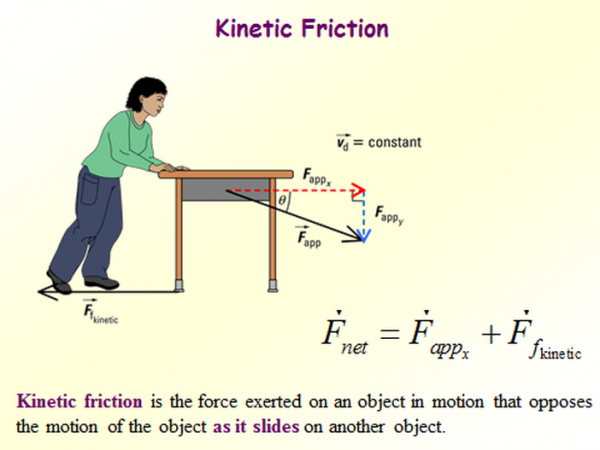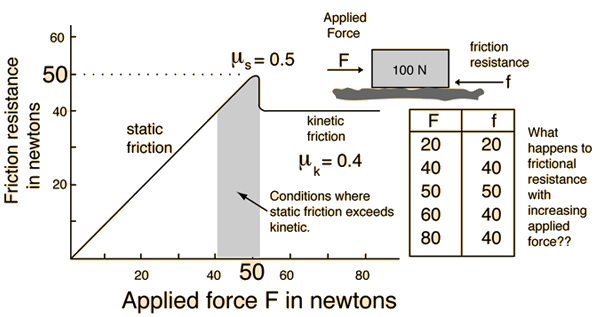| Multiple Representations is the idea that a physical phenomena can be explored in many different ways. For example, there is the physical representation which models the system with figures and diagrams, such as a free body diagram. There is also the mathematical representation which uses the equation(s) governing the physics of the system. All of the representations can be used together to help us understand and quantify the physical phenomena. |
Observe the different types of representations for this section below;

A video connecting the mathematics of kinetic friction. Exactly the same type posted in Static section

From here
Jill is roller skating in the positive x direction when all of a sudden her wheels all lock up and stop spinning and Jill begins to slide across the ground. As Jill’s motion, relative to the ground, is in the positive x direction the ground applies a force of kinetic friction in the negative x direction.